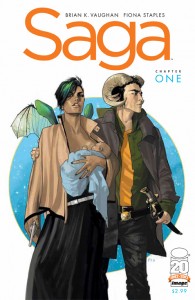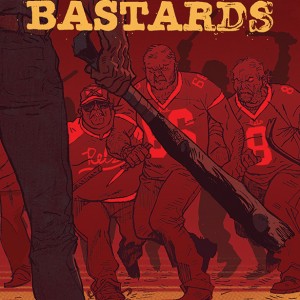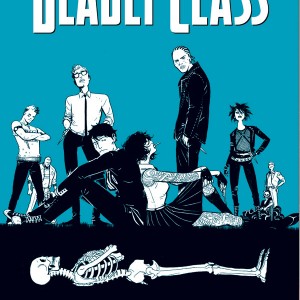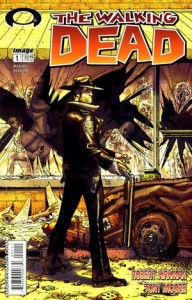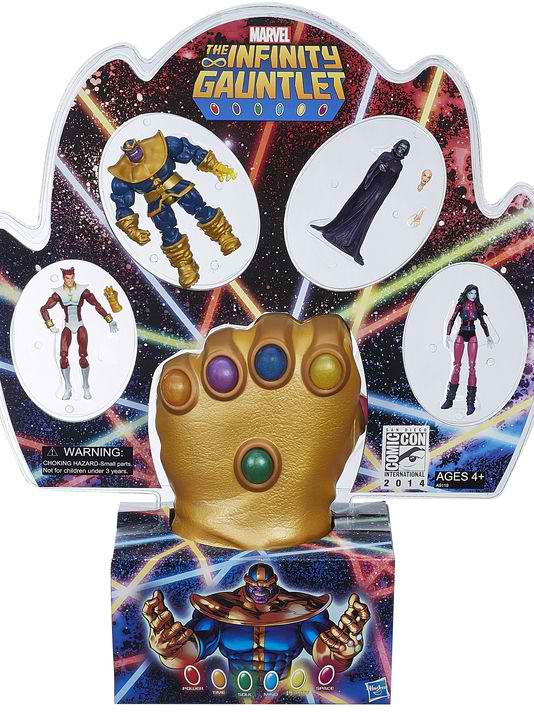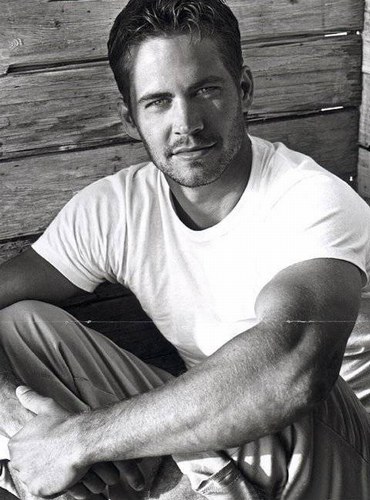DEATH OR REBIRTH: A Discourse of the Graphic Narrative Phenomenon
The Conundrum to the Continuum Complication in Mainstream Comics
So, Bruce Banner-Hulk will be back sooner than later, if the teasers in the current Uncanny Avengers say so. Doctor Octopus is now “alive”, so to speak. Jonah Jameson, Jr.’s father (and Aunt May’s second marital partner) is dead. Cyclops is already dead in the perennially endangered mutant species. Is Gwen Stacy the real thing or just another “clone” for the nth time around? And, the New 52 Superman and his better half Lois Lane are officially “gone”.
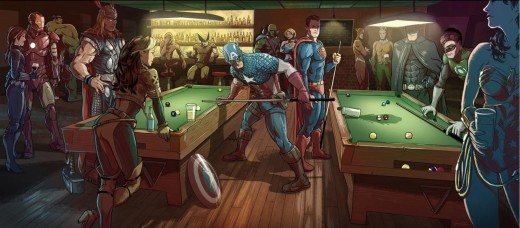
Deep inside, I really care very less right now on how Marvel and DC Comics try to spice up their respective company-wide properties just to boost sales and/or reclaim or maintain their lofty/dominant position in the comic book industry. There was a time I did really become a bit emotional whenever someone in the superhero genre died/sacrificed for what she/he’s fighting/defending for. Best examples are Superman’s heroic smack down against the monstrosity that was Doomsday in the early 1990s. Clark Kent gave it all while the entire Justice League was down and out. I monitored the Knightfall saga because I thought Bruce Wayne would be “killed” by a more cerebral and physiologically powered Bane. And Batman is my all-time favorite ever. I was shocked but gladdened that Bane “broke the bat”, not killed. The decimation of Emerald City by the villainous Cyborg -Superman in the Reign of Supermen was unquestionably brutal in the sense its greatest champion Hal “Green Lantern” Jordan was absent when that happened, and later paved the way to his “dark side” and nearly destroyed reality itself later on. Also, the first Captain Marvel’s demise was (and still is) masterfully written by Jim Starlin, demonstrating that even superheroes can succumb to the deadly effects of fatal diseases like cancer and AIDS. And, I almost shed manly tears when I read the last chapter of the epic Age of Apocalypse, particularly when Magneto, Rouge and their human baby son Charles readied themselves to be annihilated by the nuclear holocaust even though they won against Apocalypse. There are “meaningful” and “greatest” deaths in superhero comics that are too many to mention here. Some of them gave way to become the defenders of humanity, like Spider-Man, Batman, the first Robin/Nightwing and Daredevil. Moreover, others want to get revenge or avenge her/his loved ones or society he/she belonged, like Frank “The Punisher” Castle, the Crow and the Al Simmons-Spawn.
Death in comics can be effective for the readership if done properly and sparingly, similar of eating our favorite food, listen our greatest list of music or reading our list of epic books. Sometimes, legendary characters remain “dead” while other succeeded their predecessors to carry on the respective legacies and/or mantle, like Flash-Wally West, Kyle the artist Rayner-Green Lantern, Dick Grayson-Batman and even Bucky “The Winter Soldier” Barnes-Captain America. I mean, “Deaths” then were taken seriously. Readers were emotionally invested to their favorite/connected superhero characters, even to the peripheries or the sidekicks, loved ones and close relatives. In the 1970s, many comic book readers were shocked on how Gwen Stacy died. In the early 1980s, Jean Grey’s sacrifice was akin to a punch in the gut in X-collective fandom. And yes, Clark Kent’s first round with Doomsday in the 1990s was heartfelt, regardless of the mother company’s financial motives.
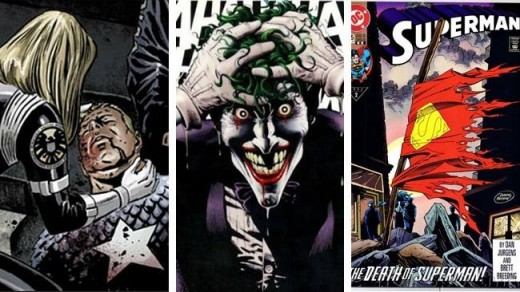
However in the present times, for veteran and/or jaded comic book readers around, superhero comic deaths are anything but significant, if not less meaningful. One reason is simple: she/he will be “back”, sooner or later, via cloning, resurrection, reanimated, rebooting, “retcon”, and other superhero logical explanations whatsoever the companies could conceive upon. This is a cyclical way of recycling and regurgitating superheroes’ lifecycles, a short of being reincarnated instead, or hesitantly making new characters instead to fit the fast-changing times, particularly in America, the birthplace of superhero comics. Gwen Stacy is a case in point, often brought back as a “clone” or something “similar”. Jean Grey is still “dead”, but her younger self is transported to the present times just the same. Steve Rogers was “assassinated” until learned that his essence was subjected to various loops in time and space (this was almost the same case with Bruce Wayne-Batman in the mind of Grant Morrison). Thor was subjected to a couple of Ragnarok and came back again in the world of the living. The greatest Flash, Barry Allen, died while trying to save the multiverse and right now, he is back, so goes to his successor Wally West. Oliver “Green Arrow” Queen died in a plane explosion but he came back life that obviously defies science and rationality. Even one of the first superheroes or anti-heroes, Namor the Submariner, was beheaded and right now, subjected to be brought back to life! In other words, almost all propertied characters in the mainstream comics will never ever fade away to the proverbial sunset.
The Curious Case of Casualties in the Independent Comics

On the other hand, creators’-owned characters that are less mainstreamed or known are something looked upon, especially when they are “killed” or send-off. Unlike the main competition counterparts that are subjected to some reincarnated/reanimated/resurrected/reimagined/retconned processes, the fates of the independent-owned characters are dictated by the creators themselves, whether or otherwise the readers love them/the creations. Creators/writers/artists in the comic competition are ultimately bounded by the dictates of the owners/editors. Sure, there are deaths around, but in the end, most of these demises would be reverse in any way possible.
The creators in the independent publishing, most particularly in Image Comics, are free to do what they want with their creations without the dictates from the publishers/owners/editors, and even from the readers and fans. In addition, if the creators are known for their excellent storytelling, including crafting characters whose respective characterizations resonate with many readers, the more possibilities the latter would emotionally invest with the former due to that same connectivity in their lives and/or the creators know how to write proper properly.
Frank Miller’s Sin City has two major characters whose deaths are way more significant than many superhero deaths. Marv in The Hard Goodbye is not perfect in any means, but his way of avenging the lady who treated him like no other makes him a fan-favorite. His gruesome death by the corrupt state feels more unjust for he is a fellow who did the “right” thing, echoing the infamous movie end phrase, “This is Sin City.” Another one is former cop Harrigan in That Yellow Bastard, whose suicide is justifiable and understandable to those who really contextualize the character’s odyssey from hell to, well, perdition. If place in morality discourse, killing one’s self is condoned, but the former enforcer sacrificed himself for the happiness and total liberation of the woman he once saved and loved. That’s selflessness if you ask me in a higher plane of so-called “morality”.

Another example is Cerebus the Aardvark by the controversial comic creator and trailblazer Dave Sim. Setting aside his views and actions that were magnets of nasty descriptions, Dave fulfilled his promise of ending his series by having his primary creation killed “unloved” and “lonely” in the landmark finale issue #300 (but virtually neither fanfare nor hyped in the comics community in the early 2000s). The journey of this Conan the Barbarian parody maybe more significant and cited, but at least, Cerebus met his Maker in the end in fulfillment of the prophecy then.
Mark Millar seems to love to kill off his characters to give stories more gravitas, if not significance, for turning his primary protagonists into more powerful and/or motivated beings, alongside some application of shock value to good measures. In Wanted, the actual death of “The Killer” by his own son and successor was emotional for not only the father-and-son relationship was getting stronger and well-established, but the former wanted to end his life on his own terms, nothing more and nothing less. This is different in The Secret Service where Eggsy’s superspy uncle was killed during a call of duty and even witnessed by his protégé and nephew, prompting the latter to take action to save the world and avenge his mentor/uncle, alongside of accomplishing their collective goal of leaving their former providence for good. And, in Jupiter’s Legacy, the paradigm of superhero, The Utopian, and his equally superpower wife, Grace, were brutally murdered by their own flesh-and-blood. This moment created a lasting emotional impact to their former wayward daughter Chloe and even paved way for former drug dealer George Hutchinson to become a responsible father and partner, a feat his superhero father George-Skyfox failed to do so. In typical Millar-esque storytelling fashion, Skyfox was killed later when things went smoothly then. And, in Kick-Ass, Hit Girl’s Big Daddy’s death is shocking in itself for the old man was actually revealed to be an average guy selling comics and love superhero genre. And being tortured to death was a sure way to increase the ante of the already dangerous Hit-Girl to the next level (on the personal level, the cinematic version by Nicolas Cage is far more emotional than the graphic visual version).
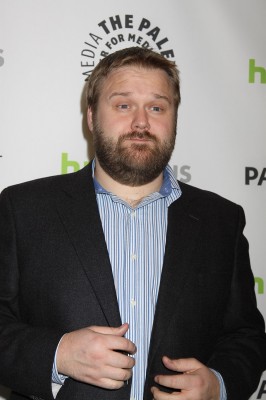
Robert Kirkman’s The Walking Dead has lots of shocking ends for characters that are still lingering, if not emotionally draining, because many of them did not deserve that kind of fate if not for some tragic turns of events, as I observe. Lorie and her baby’s deaths are still devastating to look upon even though that took place years after being told, especially the sweet innocent child. Tyreese’s brutal demise by the sadistic Governor is another gruesome example that in the Walking Dead universe, no one is safe even to the so-called “good guys”. Later on, this resonates more with Glenn’s death by the hands of a more dangerous and foul-mouthed adversary named Negan (and Lucille). To make matter worse, Glenn’s last words were the name of his beloved Maggie until his head was totally smashed. At the rate of the deaths, there would be definitely more of these until Robert ends the series later than sooner. In other words, the existential question of “why the good guys (and ladies) are killed?” rages on. However, Robert seems to balance this by having the “bad” ones get their dues in an equally ruthless fashion. Rick Grimes’s former best friend, Sean, was fated by Carl’s bullet. The Governor, the biggest monster and backstabber then before Negan came along, met a satisfying death by a horde of zombies/walkers. It is a matter of time (or not?) if Negan will meet his Maker. And, can you imagine what will happen to the television series counterpart if fan-favorite Darryl Dixon is the next one to be, well, taken away?
Eisner’s Best Writers Jason Aaron and Brian K. Vaughan have their shares of killing some of the fan-beloved characters who were supposedly to be the major protagonists who would supposedly triumph over “evil” or adversaries. The former’s “Tubb” of The Southern Bastards was brutally murdered in front of the townsfolk and in broad daylight! He was flawed alright, but he still had a code of honor, a sense of decency, and self-respect that many readers could connect and yearn with. In the critically and commercially (plus, controversially) successful series Saga, there are already a couple of vanquishes that only matched by The Walking Dead. And, Brian (and to some extent, co-creator Fiona Staples) makes no apologies here because that’s LIFE per se: Deaths are random, arbitrary, unexpected and worse, brutal. The eldest sister and “Freelancer” (a sort of mercenary) of The Will named The Brand died while she attempted to rescue her brother’s ward, Sophie. Another one is the parent’s favorite author, D. Oswald Heist, who inspired them to abandon war and love one another despite their races’ extreme animosity with each other. And even recently, Hazel, the product of love and the series’ narrator, lost her spiritual “babysitter”, Izabel, while doing a favor for an acquaintance. This is significant because she was the one who took care of Hazel during nights, and she had a well-spirited outlook to begin with.
Another creator, Rick Remender, did the unthinkable in his career in the comic industry, killing one of his well-beloved (but troubled) creations, Marcus of The Deadly Class. From the series’ initial chapter to issue #21, Marcus was the focal point and majority of the stories here revolved around him, one way or another. But Remender has other plans right now being the creator of the series. Not only was the Nicaraguan subjected to death, but also to most of his friends as part of the twisted final examination requirements. Worse, he was killed by one of lovers, akin to singing one of Bon Jovi’s iconic songs that deal with broken relationship. Lastly, one of the most classic farewells is Morpheus/Dream in Neil Gaiman’s The Sandman in the late 1990s, where the most humane and responsible of the Endless (and like Marcus above, Morpheus was the major protagonist in most of the series run) must confront the terrible fate of The Fates, while his favorite sister, Death, sat beside him to witness his final moments (the irony was, Death could not prevent it either).
3. Making “Comic” Sense on the Feared Perpetua
In other words, mainstream comic book characters are subjected to undergo the loop of birth, death, rebirth/resurrection/revitalization/reboot/retcon and ad nausea to sustain the corporate profitability and consequently, maintaining the popular cultural (or pop culture) dominance in the public sphere via the medium itself or other outlets, like the social networking and fandom. There are still “dead” characters, depending on the zeitgeist of the times, though the so-called sanctity of true “death” is nowadays elusive, if not short-termed to mid-termed. In short, mainstream comic desensitizes the cold embrace of Lady Death.
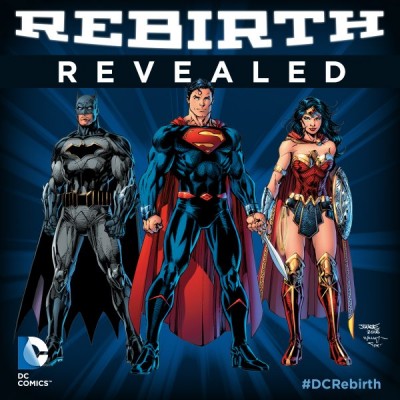
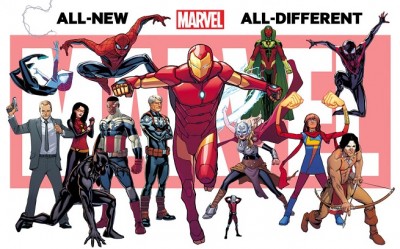
On the other hand, independent or creators’-owned comics are arguably more memorable to the readers than their established counterparts due to the creators’ dictates on the fates of their creations due, whether they are fan-favorites or their choice per se. Death is part of the cycle of life, and the creators moreover respect that one, giving the true essence of fear, suspense and uncanny to the creations’ unknown paths, and keeping the readers/fans on guard and appreciate what comics can bring at all.

